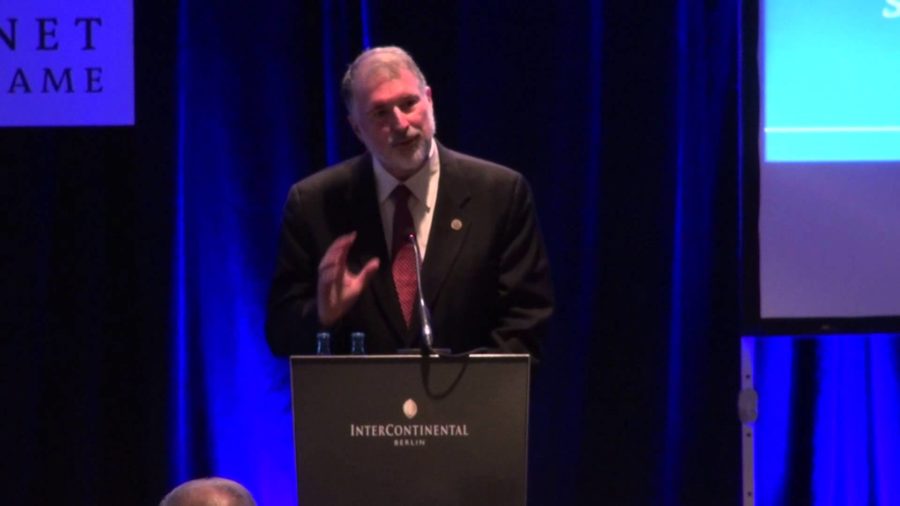Thank you very much. I’m very honored by the award. And I want you to know that half of it is being in the right place at the right time.
Let me tell you the story. The time is 1986. I’m at the University of Maryland, College Park. There is a small but growing number of TCP/IP networks, mostly single-purpose, mostly unconnected. The example we have of how to connect two TCP/IP networks is a gateway, a computer, sitting between the ARPANET and the MILNET. And the discussion is how should these networks be connected to each other and have the right rules? How can we make sure that all the right packets stay on the right networks and don’t get on the wrong networks? It’s a very complex situation, and we’re not getting very far.
So, [I] began to think about an important feature of the Internet. Sometimes, it’s better to ask forgiveness than permission. So a group of us figured this out. I was in a fortunate situation at the University of Maryland, College Park to be near a number of the federal networks. And we’d also started the first of the NSF regional networks—the first operating network, SURAnet, was connected there at College Park and I had the first campus that was TCP/IP. So that might be a great place to invite everyone else to connect.
So here’s the plan: the plan is invite everyone to connect to College Park. From their point of view, simple. Nice, simple connection to College Park. Thanks to TCP/IP, that wonderful protocol, they’ll be connected to each other. No gateway. That was a significant breakthrough, and we ended up doing that. A number of the federal agencies were among the first to go do that, and that point in College Park became known as the FIX, the Federal Internet Exchange.
But we invited anyone and everyone who wanted to connect to that exchange point to do so. So we also had Rick Adams from UUNET. We also had Bill Schrader from PSInet. We had international connections to South America, to Europe. Lots of other folks also connected to College Park and we welcomed everyone who wished to do so. Milo Medin started a second FIX on the West Coast so we didn’t have a single point of failure for the Internet. This is important: don’t have a single point of failure. So we established a second FIX at NASA Ames.
And from there, the future just was open. It turned out that there was a commercial Internet exchange that followed on after that. But the first Internet exchange without a gateway in the middle appears to have been in College Park, beginning in about 1986, and I was fortunate enough to be at the right place at the right time.
I’d like to thank a number of the folks who helped make that possible. Walt Gilbert, Mike Petry, Louis Mamakos, Jack Hahn, Jack Waters. All of those folks and many more were key to making that happen, and I want to thank them and thank the Internet Society for this honor. Thank you.
Further Reference
Glenn Ricart profile, Internet Hall of Fame 2013
